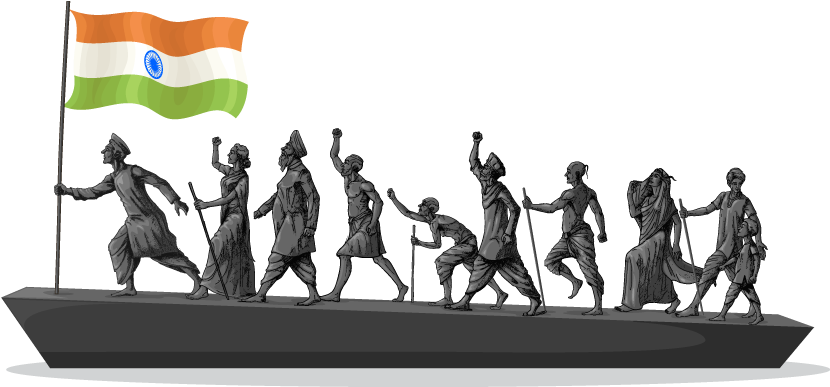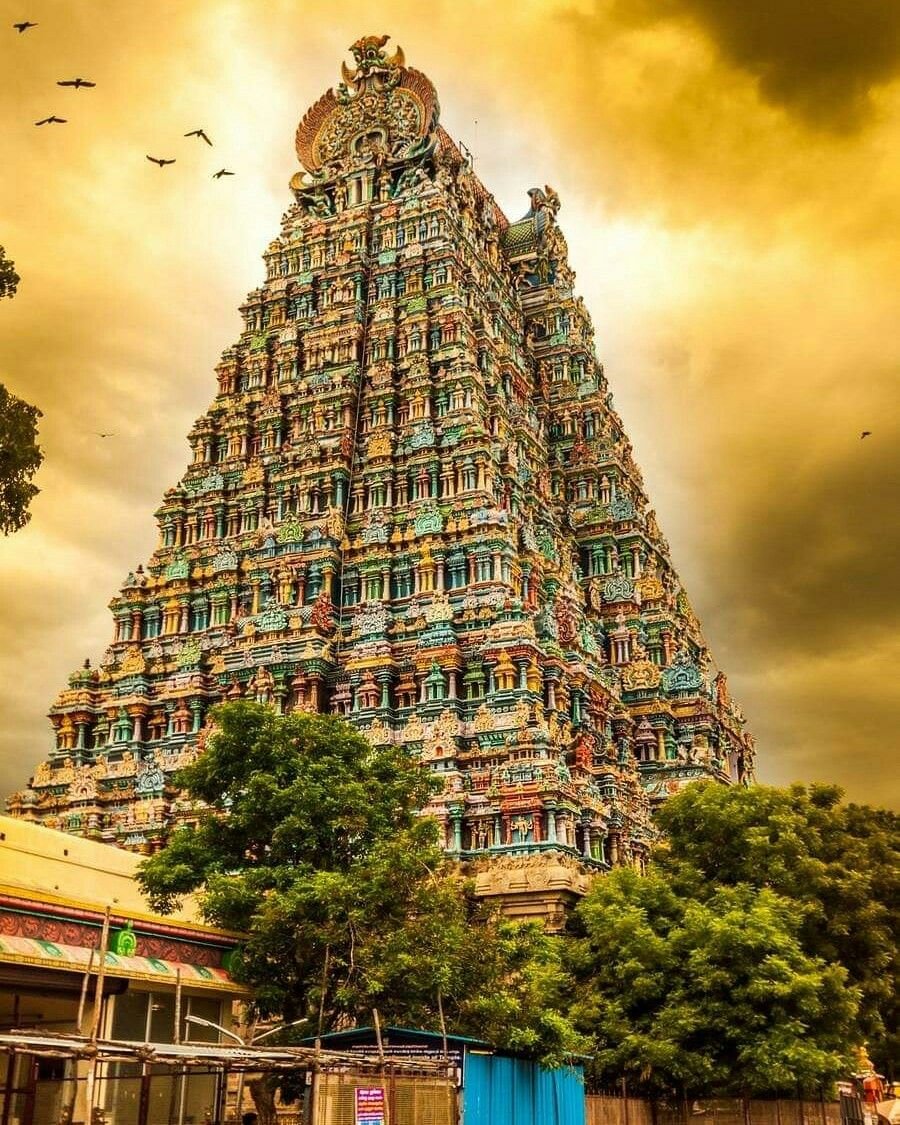
#YogaDay #YogaForWellness #YogaDay2021 #YogaForAll #InternationalYogaDay2021
What is Aṣṭāṅga Yōga?
Aṣṭāṅga Yōga finds mention not only in the Yōga aphorisms of Patanjali, but also in many other spiritual works. This is mentioned in Śrīmad Bhagavadgīta also.
What is Aṣṭāṅga Yōga?
Aṣṭāṅga Yōga finds mention not only in the Yōga aphorisms of Patanjali, but also in many other spiritual works. This is mentioned in Śrīmad Bhagavadgīta also.

Bhāgavata and other Purāṇās also propounded Aṣṭāṅga Yōga in spiritual practices.
1) Yama,
2) Niyama,
3) Āsana,
4) Prāṇāyāma,
5) Pratyāhāra,
6) Dhāraṇā,
7) Dhyāna, and
8) Samādhi are Aṣṭāṅga (Eight limbs).
1) Yama,
2) Niyama,
3) Āsana,
4) Prāṇāyāma,
5) Pratyāhāra,
6) Dhāraṇā,
7) Dhyāna, and
8) Samādhi are Aṣṭāṅga (Eight limbs).
Aṣṭāṅga Yōga – Explanation - Corroborating from multiple scriptures -
1. Ahimsa - Non-violence - Not hurting anyone with mind, speech, and body.
2. Satya - Truth - Speaking for the welfare of all creatures.
1. Ahimsa - Non-violence - Not hurting anyone with mind, speech, and body.
2. Satya - Truth - Speaking for the welfare of all creatures.
3. Brahmacharya - Celibacy - Not craving for other women and observing discipline in carnal pleasures with wife.
4. Astēya - Non-stealing - No desire of coveting others wealth even in mind.
5. R̥juta - Non-maliciousness - Not craft or cunning. Straightforward and transparent.
4. Astēya - Non-stealing - No desire of coveting others wealth even in mind.
5. R̥juta - Non-maliciousness - Not craft or cunning. Straightforward and transparent.
6. Daya - Kindness - Unable to bear other’s sufferings and offering all possible help.
7. Kṣama - Tolerance.
8. Dhr̥ti - Resoluteness in following Dharma.
9. Mitāhāra - Consuming appropriate portions of food that will not disturb Yōga life.
7. Kṣama - Tolerance.
8. Dhr̥ti - Resoluteness in following Dharma.
9. Mitāhāra - Consuming appropriate portions of food that will not disturb Yōga life.
10. Śauca - Following Sadācāra thereby obtaining external cleanliness & internal purity.
2. Niyama - This should be in 10 ways -
1. Tapas - Following prescribed stipulations, fasting, & doing tapas.
2. Santōṣa - Remaining contended with whatever is obtained following Swadharma.
2. Niyama - This should be in 10 ways -
1. Tapas - Following prescribed stipulations, fasting, & doing tapas.
2. Santōṣa - Remaining contended with whatever is obtained following Swadharma.
3. Dāna - Giving education, money, food, land, cows, and other items in charity to worthy.
4. Śraddha - Faith in the decrees of scriptuers and Guru.
5. Īśvara Puja - Regular worship of the Supreme.
6. Vēdānta Śravaṇa - Listening to the dictums of Vēdānta.
4. Śraddha - Faith in the decrees of scriptuers and Guru.
5. Īśvara Puja - Regular worship of the Supreme.
6. Vēdānta Śravaṇa - Listening to the dictums of Vēdānta.
7. Lajja - Shyness and turning back from performing Adharma.
8. Mati - Interest in Dharma.
9. Japam - Chanting the mantra into which the Guru initiated.
10. Hōma (Vrata) - Spiritual practice as ordained by Guru. Hōma etc. are part of this.
8. Mati - Interest in Dharma.
9. Japam - Chanting the mantra into which the Guru initiated.
10. Hōma (Vrata) - Spiritual practice as ordained by Guru. Hōma etc. are part of this.
Later, one should do ‘Prāṇāyāma’ correctly with focus on breath.
‘Pratyāhāra’ means to divert attention from worldly matters.
‘Dhāraṇā’ is the effort to control breath and focus on God.
‘Dhyāna’ is to concentrate mind on either formless God or God with form.
‘Pratyāhāra’ means to divert attention from worldly matters.
‘Dhāraṇā’ is the effort to control breath and focus on God.
‘Dhyāna’ is to concentrate mind on either formless God or God with form.
Experiencing oneness with the Supreme or the unification of self and the Self is ‘Samādhi’.
Combining the above Yama and Niyama with the remaining six i.e., Āsana, Prāṇāyāma, Pratyāhāra, Dhāraṇā, Dhyāna, and Samādhi forms the holistic Yōga.
Combining the above Yama and Niyama with the remaining six i.e., Āsana, Prāṇāyāma, Pratyāhāra, Dhāraṇā, Dhyāna, and Samādhi forms the holistic Yōga.
Patanjali also mentioned the rule of ‘Īśvara Praṇidhāna’ under which reminiscing and singing the glories of God and surrender are mentioned.
All the others - Āsana, Prāṇāyāma etc., - shall be fruitful only of those who incorporate Yama and Niyama strictly into the lifestyle.
All the others - Āsana, Prāṇāyāma etc., - shall be fruitful only of those who incorporate Yama and Niyama strictly into the lifestyle.
1 should adopt a comfortable seat in steady Yōga.
Scriptures prescribe Padmāsana, Vajrāsana & Vīrāsana. 1 should adopt such posture where 1 feels comfortable to perform Yōga.
Above is the concise explanation of Aṣṭāṅga Yōga as summarized from Dharma Śāstrās and Yōga Śāstrās.
Scriptures prescribe Padmāsana, Vajrāsana & Vīrāsana. 1 should adopt such posture where 1 feels comfortable to perform Yōga.
Above is the concise explanation of Aṣṭāṅga Yōga as summarized from Dharma Śāstrās and Yōga Śāstrās.
Misconceptions about Yōga
1. Is it true that concentrating on breath is sufficient and there is no necessity of any further mantras, tantras, and pujas? As this is completely untraditional, many doubts are arising to follow the same.
1. Is it true that concentrating on breath is sufficient and there is no necessity of any further mantras, tantras, and pujas? As this is completely untraditional, many doubts are arising to follow the same.
2. Some are saying that worship of no god or goddess is required if one practices Yōga. Is this true?
There is no doubt that Yōga is a great path in spiritual sādhana. Concentrating on breath is part of ‘Prāṇāyāma’ Vidya.
There is no doubt that Yōga is a great path in spiritual sādhana. Concentrating on breath is part of ‘Prāṇāyāma’ Vidya.
Mentioning that doing just this is sufficient and others are not necessary is not appropriate.
Focusing on breath, is eating or sleeping stopped?
Gods and goddesses are the different centers of energy present in the path of Yōga at different stages.
Focusing on breath, is eating or sleeping stopped?
Gods and goddesses are the different centers of energy present in the path of Yōga at different stages.
For example, Mūlādhāra is the position of Gaṇapati.
Pleasing the presiding deity of a position leads to the progress in the path of Yōga. Spiritual Sādhana becomes more powerful with the combination of Mantra and Yōga.
Pleasing the presiding deity of a position leads to the progress in the path of Yōga. Spiritual Sādhana becomes more powerful with the combination of Mantra and Yōga.
In traditional paths of worship and mantra treatises, Yōga practices such as Prāṇāyāma are adapted as a part.
Taking just one part from the ancient scriptures and propagating as a new science while demeaning the traditional dharmic paths in fact devastates the Sanskr̥ti.
Taking just one part from the ancient scriptures and propagating as a new science while demeaning the traditional dharmic paths in fact devastates the Sanskr̥ti.
One should not encourage such practices or at least should preach not to demean traditional methods.
(Adapted from ‘Samadhanam - Volume 2’ by Brahmasri Samavedam Shanmukha Sarma ji)
***End***
(Adapted from ‘Samadhanam - Volume 2’ by Brahmasri Samavedam Shanmukha Sarma ji)
***End***
• • •
Missing some Tweet in this thread? You can try to
force a refresh














